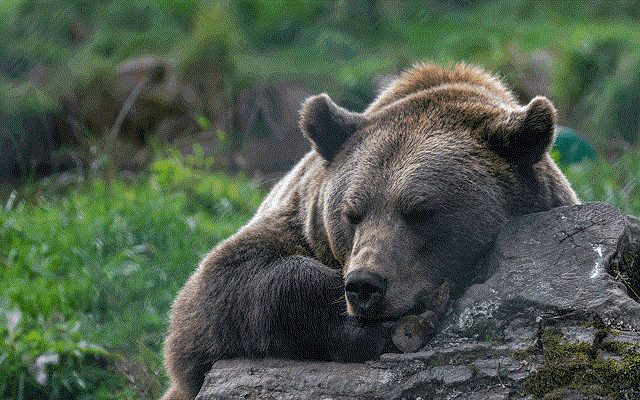SINCE 1978, I have been watching and awaiting this moment when we as the Sea to Sky community come to face the challenge of living in unison with grizzly bears. For most of that time, people were generally in denial that these magnificent creatures actually inhabited many locales not far off the beaten track.
Those that did often treated them as a threat and dispatched them quickly with a rifle. As the remote South Coast Range became increasingly vehicle accessible through an unparalleled rate of landscape change brought on by wholesale clear-cut harvesting practices, this pattern of behaviour also accelerated. The combination of vast habitat destruction and unabated human predation brought grizzly bear populations to dangerously low numbers.
In many areas, these numbers remain of serious concern and mitigative strategies to stabilize fragile populations are yielding limited results. Where those conditions exist, government has opted to use a regulatory framework to increasingly control human interactions that are deemed to contribute to population loss. Much controversy exists over the validity of these actions.
Conservationists argue that we need to do almost anything to protect the balance. Outdoor recreationalists claim some conservationists intentionally malign their sports as being contributing factors to the decline without sufficient fact.
They point to the Yellowstone [National] Park experience, often touted as the hallmark of bear management. Prior to 1975 and measures placed on hunting, Yellowstone's bear community had dwindled to less than 150 bears. In that year, visitation to the Park was 2.2 million. With the introduction of an extensive public-education program and other mitigative measures, Yellowstone has recovered to a remarkable 700 grizzlies meanwhile increasing tourism to 4.4 million annual visits.
Outdoor recreationalists claim it's not the presence of human beings that is disruptive but rather the nature of the interaction. They point to the intellect of the grizzly, which by some scientists' measure is at least as developed as many primates. There are innumerable anecdotal reports of bear interactions with individual humans that can only be attributed to cognitive recognition and deduction.
Grizzly bears have been on the landscape longer than man. They have risen to the top of the food chain. They are incredibly intelligent creatures capable of making critical habitat decisions.
Many experienced mountain travellers brace when confronted with the assumption that the presence of a hiker or mountain biker equates in a bear's mind to that of a hunter or habitat destructing logger. The claim to do so, is to do a disservice to this animal's intellect. They believe bears readily determine threat on a daily basis and respond accordingly.
The fact that bear numbers are on the rise locally indicates that the theory of mere human presence as a threat to habitat needs to be validated in this environment.
Many question the motivations of "grizzly bear experts" as being elitist and overstating the issue in order to receive public support and research funds in a high-profile community like Whistler. They claim the backcountry recreation agenda has been hijacked by special interest.
My own personal opinion is we should all rejoice in the fact that the grizzly bear populations to the west of Whistler are showing significant return to historical levels.
Our ability to co-exist with them requires that we now exchange our fears for understanding, knowledge and respect.
Can we do a better job of planning in the future? Absolutely! But ... travelling or recreating in grizzly bear habitat is not unlike, or should at least be considered in the same context as, travelling in avalanche territory.
You need to be knowledgeable of the environment/conditions, situationally aware and prepared while carrying proper equipment. Just as with avalanches, you must do everything possible to limit your exposure to them.
Understand their diet and feeding habits and match them geographically to where these food sources exist at any particular time of the season. Avoid activities around dusk and dawn when feeding is most prevalent. Stay out of huckle and blueberry patches, avoid tenting by water courses and always make lots and lots of noise. Travel in groups.
Most of all ... respect that these are the natural inhabitants of the landscape and you are the intruder.
The vast majority of local residents are accustomed to assessing and managing risks while in the outdoors. We do it successfully all winter long.
In the case of bear management, what we need is better public education and planning initiatives, a sophisticated monitoring/reporting system and a management framework that reflects what is occurring on the landscape at any particular time.
We can do this. We can live together and both can thrive.
This is not to say that incidents won't occur—they do every winter. But it is a rational approach to a complex issue and puts the responsibility for the long-term sustainability of the bear back on the individual human, where it needs to be.
It will yield a much better long-term result than arguing over who is right or wrong and who can and cannot do what.
Brad Sills // Whistler




